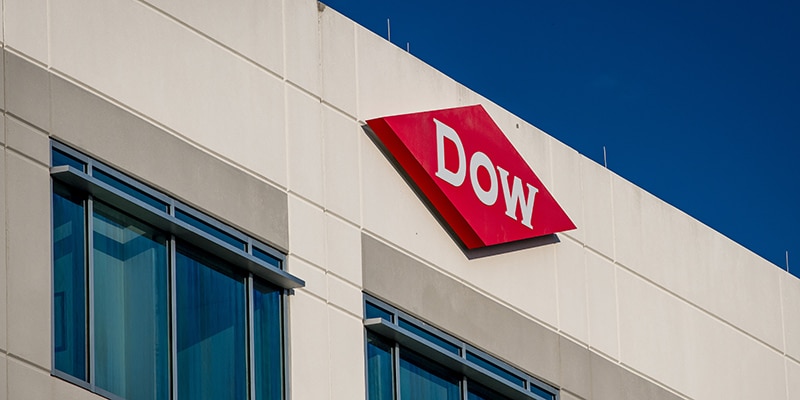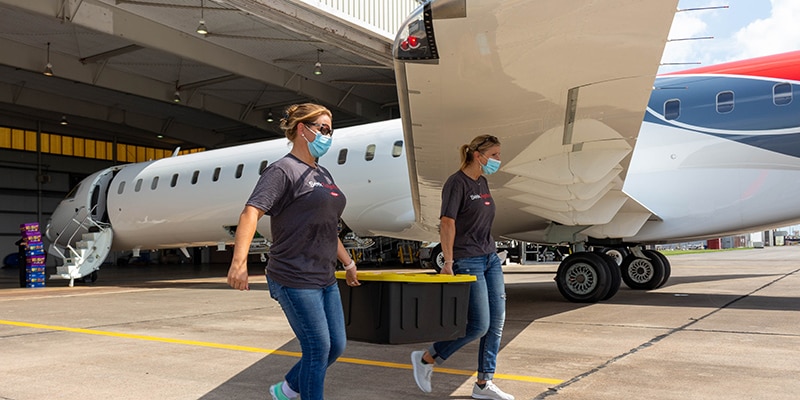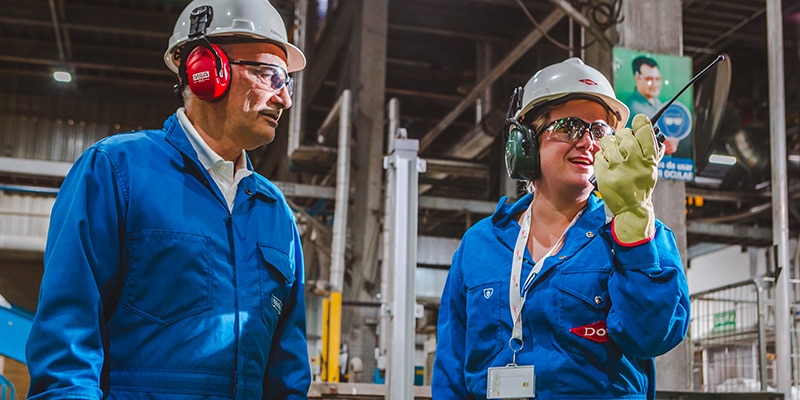From our eucalyptus plantation to our Amazon Rainforest conserved area to surrounding ranchlands, Dow has piloted tools to scientifically assess biodiversity in and around our Breu Branco site in Pará , Brazil. These tools are yielding important insights and contributes to help with decision-making across our global sites.
Investing in Scientific Tools to Measure Biodiversity
The Issue: A Need for Credible Tools
 Increasingly, businesses are paying more attention to biodiversity, and for good reason. According to the World Economic Forum (WEF), more than half of the global gross domestic product depends on nature. Yet biodiversity is declining faster than at any time in human history.
Increasingly, businesses are paying more attention to biodiversity, and for good reason. According to the World Economic Forum (WEF), more than half of the global gross domestic product depends on nature. Yet biodiversity is declining faster than at any time in human history.
Consequently, businesses are increasingly looking for science-based, quantitative methodologies, tools and metrics to better assess their impacts on biodiversity and understand dependencies on biodiversity in a credible way. While methods for quantifying carbon is widespread and well-established, the equivalent for biodiversity is just beginning to be adopted, due to the complexity of measuring biodiversity.
“Incorporating biodiversity within business decisions is crucial to achieving a sustainable future,” said France Guertin, Dow’s global technical leader for nature-based solutions. “Just as climate change alters habitats and ecosystems, loss of biodiversity contributes to climate change and intensifies its effects.”
Creating a Next-Generation Tool
Dow recently partnered with the EcoMetrix Solutions Group (EMX) and The Nature Conservancy to pilot a new suite of assessment tools designed to provide input to the decision-making process at all stages of a project life cycle, from pre-planning to long-term monitoring.
“The insights from these tools are important,” Guertin noted. “We can use the tools across our sites globally to better characterize the environment condition of a landscape, understand the impact of our choices on biodiversity, and to test different scenarios as we plan for future projects.”
Dow has long been a corporate leader in recognizing the business benefits to valuing nature. Since 2011, we have worked with The Nature Conservancy (TNC) to pioneer an approach to valuing the services of nature on our sites around the world. This collaboration led to the launch of our 2025 Sustainability Goal on Valuing Nature in 2015, in which we made the bold commitment to realize more than $1 billion in net present value by 2025 through business-driven projects that enhance nature.
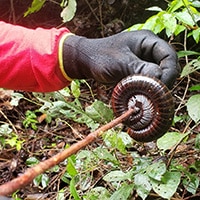 That same year, we also launched the Ecosystem Services Identification & Inventory Tool (ESII) with EMX and TNC to help us understand the benefits that nature provides to Dow and incorporate the business value of nature into decision-making. Over the last couple of years, ESII has undergone a major overhaul to incorporate new functionality for assessing how well a landscape supports biodiversity and carbon sequestration. The new platform, called Ecosystem Intelligence (EI), will soon be launched commercially by EMX (www.ecosystemintelligence.com).
That same year, we also launched the Ecosystem Services Identification & Inventory Tool (ESII) with EMX and TNC to help us understand the benefits that nature provides to Dow and incorporate the business value of nature into decision-making. Over the last couple of years, ESII has undergone a major overhaul to incorporate new functionality for assessing how well a landscape supports biodiversity and carbon sequestration. The new platform, called Ecosystem Intelligence (EI), will soon be launched commercially by EMX (www.ecosystemintelligence.com).
“The EI platform enables users to characterize the features of a landscape and then evaluate how suitable they are for supporting a broad spectrum of species groups, from invertebrates to large mammals, across each of their life-history stage requirements,” said Kenna Halsey, principal of EMX. “The EI platform also captures carbon uptake and storage in vegetation and soil, while simultaneously quantifying water quality, water quantity, air quality, soil health, noise and visual screening, among other benefits.”
Testing in the Field
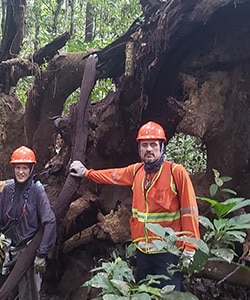 At our Breu Branco site, a team from Dow and EMX performed a comprehensive and detailed mapping of biodiversity at two eucalyptus plantations and 38,000 hectares of conserved rainforest, in comparison to numerous farmland parcels located nearby.
At our Breu Branco site, a team from Dow and EMX performed a comprehensive and detailed mapping of biodiversity at two eucalyptus plantations and 38,000 hectares of conserved rainforest, in comparison to numerous farmland parcels located nearby.
“Before the project, the ecosystem service benefits associated with Dow’s land management, stewardship in comparison to the conservation areas and surroundings, were unquantified,” Guertin said. “We wanted to determine the value created by Dow’s current and future land management practices, as well as determine how large corporations like Dow can set, and measure, biodiversity targets credibly and efficiently.”
What emerged were tiers of biodiversity performance, with Dow’s eucalyptus plantation performing significantly better than surrounding farmlands and the preserved rainforest displaying highest levels of biodiversity.
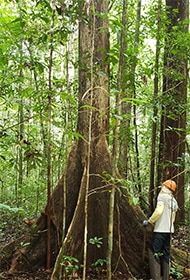 “We sampled various properties near the site to get a representative understanding of their condition, and many of these rural landscapes had been pretty heavily deforested and degraded,” Halsey said. “The management of the Dow eucalyptus plantations was impressive in terms of the science and level of care that foresters took to protect the soil and encourage biodiversity. Dow’s approach to minimizing soil disturbance, carefully managing crop rotation, and protecting natural corridors throughout the site resulted in quantifiable benefits across a wide array of ecosystem services, including biodiversity, pest regulation, soil health, climate regulation, protection of water quality, etc. We saw significant improvement in all of these measures in comparison to the surrounding landscape.”
“We sampled various properties near the site to get a representative understanding of their condition, and many of these rural landscapes had been pretty heavily deforested and degraded,” Halsey said. “The management of the Dow eucalyptus plantations was impressive in terms of the science and level of care that foresters took to protect the soil and encourage biodiversity. Dow’s approach to minimizing soil disturbance, carefully managing crop rotation, and protecting natural corridors throughout the site resulted in quantifiable benefits across a wide array of ecosystem services, including biodiversity, pest regulation, soil health, climate regulation, protection of water quality, etc. We saw significant improvement in all of these measures in comparison to the surrounding landscape.”
Guertin said the pilot project helped confirm that Dow is taking effective measures to conserve biodiversity at the site. In addition, the project also demonstrated how taking measures to preserve biodiversity projects could have socio-economic benefits to the surrounding community, as well as ecological benefits.
Mapping the biodiversity of the rainforest conserved area helped Dow identify plant species of commercial interest to the cosmetics and pharmaceutical industries in a responsible and sustainable manner.
“Our mission with EI is to achieve a pervasive positive impact on the landscape,” Halsey said. “We’re grateful for projects like this that consider landscape management from a systems perspective. The original ESII Tool, and now the EI platform, help users make proactive decisions and better understand how the decisions that they’re making today might impact biodiversity in five to 10 ten years from now.”



